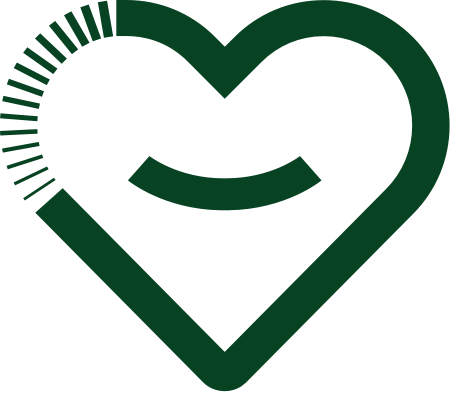Muscular Dystrophy and the Use of Disability Support Services
A muscular dystrophy diagnosis can be supported by your NDIS service provider
This page provides information on muscular dystrophy and where to get support in Australia.
Jump to:

What is muscular dystrophy?
Muscular dystrophy (also known as MD) is a group of disabilities that affect the muscles responsible for moving your body. Muscular dystrophy makes the muscles weak and waste away, increasing in severity over time. For this reason, it is important to become familiar with NDIS service providers, to ensure you and your loved ones are receiving the most suitable disability support services.
There are many typesof muscular dystrophy depending on which parts of the body are affected. Some of these dystrophies appear in childhood, such as the most common Duchenne muscular dystrophy. Others become apparent in teenage years or adulthood.
Muscular dystrophy is caused when the genes linked to muscle growth don’t function properly, or are missing altogether. Sometimes, these gene changes are inherited from parents, while others happen while the foetus develops during pregnancy.
Muscular dystrophy cannot be cured or reversed, but treatments and supports are available through Australian home care services and NDIS service providers. These forms of assistance can help manage symptoms and slow the development of the disease.
Signs and diagnosis
Different types of muscular dystrophy have different symptoms and progression. Some types can be diagnosed by the age of two or three if symptoms are recognised early. Other types may not become apparent in childhood, and some begin later in life.
Things to look out for include:
- frequent falling or not being able to stand up
- not being able to crawl or walk (or losing the ability to walk in toddlers)
- unexplained muscle loss
- weakness in certain parts of the body, which you might notice because it is hard to reach for high things, or your knees give way suddenly
- problems breathing or swallowing
- back problems, like scoliosis
If you have concerns, the first step is to contact your doctor.
Diagnosing muscular dystrophy will depend on symptoms, age, and other possible causes. It can involve blood tests, genetic testing, muscle biopsy (taking a sample of the affected muscle to look at it under a microscope), and electromyography, which tests the health of the muscles and nerves.
The prognosis, or long-term outlook, is different for each type of muscular dystrophy, however early diagnosis of any type of muscular dystrophy helps in ensuring effective treatment and the right supports.
Treatment, services and support
Treatment for muscular dystrophy focuses on reducing the disease’s effects on joints and the spine, and managing its effects on daily life.
Your treatment and supports should be unique to you and how muscular dystrophy affects your life. For example, some people may need a walker or wheelchair, while others will need physiotherapy and occupational therapy to treat the muscles and joints. All these forms of assistance can be arranged by your NDIS service providers.
Medications may be used for some types of muscular dystrophy to slow the disease down. These should be discussed with your treating doctor.
It is a good idea to find a general practitioner (GP) near you who can provide regular check-ups and offer long-term support.
You can also apply for access to the National Disability Insurance Scheme (NDIS). The NDIS funds the supports and services that you need to manage the effects of muscular dystrophy on your daily life through supported independent living assistance. It is a good idea to apply as soon as you get a diagnosis.
If your child under seven hasn’t been diagnosed yet but is not meeting developmental milestones, contact your local NDIS Early Childhood Early Intervention (ECEI) partner. They will connect you to supports and give you more information about the NDIS.
Find out who to contact about the NDIS where you live.
Muscular dystrophy affects families and carers, too. It is important carers get assistance so they can continue caring for loved ones. Carer supports are available through:
- muscular dystrophy support networks in each state and territory
- government-funded carer support programs
- the NDIS
- the Carer Gateway support network
Families may wish to explore genetic testing and counselling. Genetic counsellors can help you understand what a diagnosis means for you and your family, and give you information about what genetic testing options are available. Genetic counsellors are trained health professionals who will be sensitive to your circumstances. The Genetic Support Network of Victoria can put you in touch with these practitioners wherever you live across Australia.
You can also contact your doctor to discuss getting a mental health treatment plan, or a mental health support organisation to speak to someone directly.
How Claro can support you
At Claro, we provide disability and allied health services that can be tailored to you. Our disability support services include in-home personal care, assistance with shopping, transport, personal care, supported independent living and helping you access specialist disability accommodation.
We also partner with Plena Healthcare to provide allied health services, which are often part of a long-term muscular dystrophy management plan. These include nursing, occupational and physiotherapy, speech pathology, dietetics, and podiatry.
While we continue to grow our team and the services we can offer across Australia, we currently offer supports to clients over 18 years old. Get in touch todayto find out what services we offer near you.
Fill out our enquiry form and we will contact you to talk through the right support options.
Resources
- Muscular Dystrophy, Health Direct
- Duchenne Muscular Dystrophy, Health Direct
- Muscular Dystrophy, Better Health Channel Victoria
- Muscular Dystrophy Australia
- Muscular Dystrophy Foundation Australia
- Muscular Dystrophy NSW Peer Connect
- Understanding the NDIS
- Applying to access the NDIS
- How NDIS Early Childhood Early Intervention works



